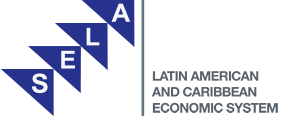BACKGROUND
Since the first Summit of CALC to establish CELAC in December 2008, one of the priority lines of action of CELAC has been complementarity, cooperation and coordination among integration mechanisms in Latin America and the Caribbean.
In paragraph 36 of the document establishing CELAC, the Caracas Declaration, the signatories decided to “commit the willingness of our Governments to guide the regional mechanisms and organisms, to promote among themselves communication, cooperation, articulation, coordination, complementarity and synergy, where appropriate, and through their respective executive bodies, in order to contribute to the achievement of the integration goals set forth in this declaration (…).”
At the Havana Summit, held in 2014, CELAC issued a Special Declaration on the Strengthening of Integration, in which emphasis is made on the need to “seek practical means for the strengthening of the efforts geared at consolidating integration through, inter alia, deepening of the interrelation, complementariness, cooperation and convergence between regional and sub-regional integration mechanisms…”
Understanding the concepts of articulation, cooperation, coordination and complementarity, both in its theoretical and practical dimensions, is of particular relevance for the progress of the integration process in Latin America and the Caribbean. It is also of fundamental importance to understand the economic and institutional factors that could facilitate or prevent the effective articulation among regional integration mechanisms.
In this connection, SELA, in its continued interest in promoting economic integration among Latin American and Caribbean countries, has organized this regional meeting to present a study on regulatory frameworks and their progress towards harmonization and convergence. The existence of dissimilar elements in legal regulations of countries making up a trade bloc could mean a barrier to the intended integration of subregional mechanisms. On the contrary, the existence of a uniform regulatory framework would reinforce competition, facilitate the entry of production factors and stimulate investment in the pursuit of higher economic growth for regions and greater socio-economic well-being of the population.
The document prepared by SELA makes a description of the regulatory frameworks of countries making up the Pacific Alliance (AP), the Andean Community of Nations (CAN), the Caribbean Community (CARICOM), the Common Market of the South (MERCOSUR) and the Central American integration System (SICA). Subsequently, the Permanent Secretariat shall prepare documents on existing regulations in other non-conventional integration mechanisms in Latin America and the Caribbean.







